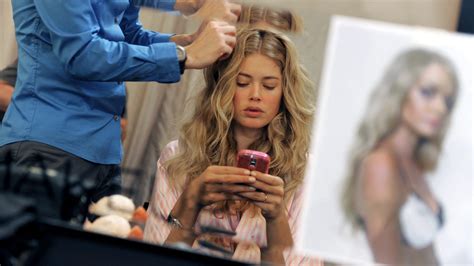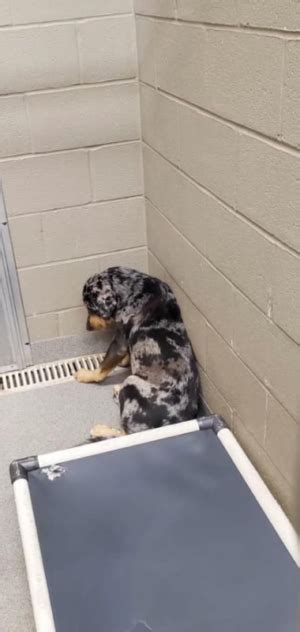
Recession hair, characterized by lower-maintenance and budget-friendly haircuts and styles, is making a comeback as consumers seek ways to save money amid persistent economic uncertainty, potentially offering significant savings without sacrificing style.
With inflation remaining stubbornly high and concerns about a potential recession lingering, individuals are increasingly turning to simpler, more affordable hairstyles to cut costs. This trend, dubbed “recession hair,” involves opting for styles that require less frequent salon visits, are easier to maintain at home, and minimize the need for expensive styling products. “People are definitely thinking more about how often they need to go to the salon and how much they’re spending,” says Keka Heron, co-owner of Texture vs Race salon in Brooklyn. “They’re trying to stretch out the time between appointments.”
The shift towards recession hair reflects a broader trend of consumers prioritizing value and practicality in their spending habits. As household budgets tighten, discretionary expenses like elaborate hairstyles are often among the first to be scaled back. This phenomenon has been observed in previous economic downturns, with similar trends emerging during the 2008 financial crisis and other periods of economic hardship.
Several factors contribute to the appeal of recession hair. First and foremost, it offers a tangible way to reduce spending. Regular salon visits for haircuts, coloring, and styling can quickly add up, especially for those with complex or high-maintenance hairstyles. By opting for simpler cuts and styles, individuals can significantly reduce their salon bills.
Second, recession hair often translates to lower maintenance. Styles that are easy to manage at home require less time and effort to style each day, freeing up valuable time and reducing the need for expensive styling products. This can be particularly appealing to busy individuals who are already juggling multiple responsibilities.
Third, recession hair can be a way to express a sense of solidarity and practicality during challenging times. By embracing simpler styles, individuals can signal that they are being mindful of their spending and prioritizing essential needs. This can create a sense of community and shared experience, particularly among those who are feeling the financial pinch.
The specific styles that fall under the umbrella of recession hair vary depending on individual preferences and hair types. However, some common examples include:
-
Longer hairstyles that require less frequent trims: Allowing hair to grow longer can reduce the need for regular haircuts, saving both time and money.
-
Simple, one-length cuts: These cuts are easy to maintain at home and don’t require specialized styling techniques.
-
Natural hair textures embraced without extensive styling: Allowing natural curls, waves, or coils to air dry can eliminate the need for heat styling and expensive products.
-
Low-maintenance color techniques like balayage or ombre: These techniques require less frequent touch-ups compared to traditional highlighting or all-over color.
-
Embracing gray hair: Allowing gray hair to grow in naturally can eliminate the need for costly coloring treatments.
The trend is not limited to women. Men are also adopting simpler styles, opting for shorter, more manageable haircuts that require less styling. Low-fade haircuts are a classic example that men are trending towards.
The economic impact of the recession hair trend is potentially significant for the beauty industry. As consumers cut back on salon visits and styling product purchases, salons and retailers may experience a decline in revenue. This could lead to job losses and business closures, particularly among smaller, independent salons that rely on regular clientele.
However, the trend also presents opportunities for businesses that are willing to adapt. Salons that offer affordable, low-maintenance services and products may be able to attract budget-conscious customers. Similarly, retailers that focus on selling affordable styling tools and products may see an increase in demand.
In addition, the recession hair trend could lead to greater innovation in the beauty industry. As consumers seek ways to save money and time, companies may be incentivized to develop new products and services that are both affordable and effective. This could lead to the development of new hair care technologies, DIY styling tools, and personalized hair care solutions.
The long-term impact of the recession hair trend remains to be seen. However, it is clear that economic uncertainty is having a significant impact on consumer behavior in the beauty industry. As long as economic conditions remain challenging, it is likely that the trend towards simpler, more affordable hairstyles will continue.
Some argue that the recession hair trend is not simply a matter of saving money. It is also a reflection of changing attitudes towards beauty and self-expression. As individuals become more comfortable embracing their natural hair textures and styles, they may be less inclined to spend time and money on elaborate hairstyles.
This shift towards natural beauty could have a positive impact on self-esteem and body image. By embracing their natural features, individuals may feel more confident and comfortable in their own skin. This could lead to a greater sense of self-acceptance and a reduced emphasis on external appearances.
However, others argue that the recession hair trend could have negative consequences for the beauty industry. As consumers cut back on salon visits and styling product purchases, the industry may experience a decline in innovation and creativity. This could lead to a homogenization of hairstyles and a loss of diversity in the beauty landscape.
Ultimately, the impact of the recession hair trend will depend on how individuals and businesses respond to the changing economic landscape. By embracing innovation, affordability, and inclusivity, the beauty industry can adapt to the challenges of the recession and continue to thrive in the years to come.
The trend of recession hair also highlights the cyclical nature of fashion and beauty trends. Just as hemlines rise and fall with the economic tide, hairstyles often reflect the prevailing social and economic conditions. During times of prosperity, elaborate and extravagant hairstyles may be in vogue. However, during times of economic hardship, simpler, more practical styles tend to take center stage.
This cyclical pattern suggests that the recession hair trend may not be permanent. As economic conditions improve, it is possible that consumers will once again be willing to spend more time and money on their hair. However, the trend could also leave a lasting impact on the beauty industry, leading to a greater emphasis on affordability, practicality, and natural beauty.
Regardless of its long-term impact, the recession hair trend serves as a reminder that beauty is not simply about aesthetics. It is also about economics, culture, and self-expression. By understanding the forces that shape beauty trends, we can gain a deeper appreciation for the complex and ever-changing world of fashion and style.
The increasing popularity of recession hair also mirrors the rise of the “quiet luxury” trend, emphasizing understated elegance and quality over ostentatious displays of wealth. This alignment suggests a broader cultural shift towards valuing practicality and longevity in personal style choices.
The article mentions that even salon owners are noticing the shift. Heron noted that clients are “trying to stretch out the time between appointments,” indicating a deliberate effort to reduce spending on salon services.
Furthermore, the move towards simpler hairstyles can be seen as a form of resistance against the pressures of consumerism and the constant pursuit of perfection. By embracing natural textures and low-maintenance styles, individuals can challenge the unrealistic beauty standards promoted by the media and the beauty industry.
The resurgence of recession hair isn’t just about saving money; it’s also about saving time. With increasingly demanding work schedules and personal commitments, people are looking for ways to simplify their lives, and a low-maintenance hairstyle can be a significant time-saver.
Another aspect of this trend is the increasing accessibility of DIY hair care information and resources. With the abundance of tutorials and product reviews available online, people are becoming more confident in their ability to maintain their hair at home, reducing their reliance on professional services.
The “recession hair” phenomenon is indicative of a larger societal adaptation to economic pressures, demonstrating how even personal grooming habits can reflect broader economic realities and shifting priorities.
The trend also reflects a growing awareness of the environmental impact of the beauty industry. By reducing the use of chemical treatments and disposable styling products, individuals can minimize their carbon footprint and contribute to a more sustainable approach to beauty.
In conclusion, the return of recession hair is more than just a passing trend. It’s a reflection of economic realities, changing attitudes towards beauty, and a growing desire for practicality and sustainability. As long as economic uncertainty persists, it’s likely that simpler, more affordable hairstyles will continue to be in vogue.
Frequently Asked Questions (FAQs)
1. What exactly is “recession hair”?
Recession hair refers to a trend of adopting lower-maintenance, more affordable haircuts and hairstyles as a way to save money during times of economic uncertainty. These styles typically require less frequent salon visits, are easier to manage at home, and minimize the need for expensive styling products. Examples include longer hairstyles requiring fewer trims, simple one-length cuts, embracing natural hair textures, and opting for low-maintenance color techniques like balayage. The goal is to reduce the overall cost and time associated with hair care.
2. Why is “recession hair” becoming popular now?
The popularity of recession hair is driven by several factors related to the current economic climate. Persistent inflation, concerns about a potential recession, and rising household expenses are leading consumers to prioritize value and practicality in their spending habits. As discretionary expenses are often the first to be cut, simpler, more affordable hairstyles offer a tangible way to reduce spending on salon visits and styling products. Keka Heron of Texture vs Race salon notes, “People are definitely thinking more about how often they need to go to the salon and how much they’re spending,” indicating a conscious effort to save money.
3. How can adopting “recession hair” save me money?
Adopting recession hair can save money in several ways:
- Reduced Salon Visits: Less frequent haircuts, coloring, and styling appointments translate to lower salon bills.
- Lower Maintenance: Styles that are easy to manage at home require less time and effort to style each day, reducing the need for expensive styling products.
- DIY Options: Embracing natural hair textures or learning simple styling techniques allows individuals to perform more hair care tasks at home, further reducing reliance on professional services.
- Less Product Usage: Simplified styles often require fewer styling products, leading to cost savings over time.
4. What are some specific examples of “recession hair” styles?
Specific examples of recession hair styles include:
- Longer Hair: Allowing hair to grow longer to reduce the frequency of trims.
- Simple, One-Length Cuts: Easier to maintain at home without specialized styling.
- Natural Hair Textures: Embracing natural curls, waves, or coils without extensive styling.
- Low-Maintenance Color: Techniques like balayage or ombre that require less frequent touch-ups.
- Embracing Gray Hair: Allowing gray hair to grow in naturally to avoid coloring costs.
- Shorter, Simpler Styles (for men): Low-fade haircuts that are easy to maintain.
5. What is the impact of the “recession hair” trend on the beauty industry?
The recession hair trend can have both positive and negative impacts on the beauty industry. A potential decline in revenue for salons and retailers is a negative impact as consumers cut back on salon visits and styling product purchases, potentially leading to job losses and business closures, especially for smaller, independent salons. On the other hand, it could also open doors to positive impacts such as opportunities for businesses that offer affordable, low-maintenance services and products to attract budget-conscious customers. It could also lead to greater innovation in the beauty industry such as the development of new hair care technologies, DIY styling tools, and personalized hair care solutions.
Expanded Context and Further Analysis
The “recession hair” trend is not just a superficial shift in styling preferences; it’s a microcosm of broader economic anxieties and evolving consumer behaviors. To fully understand its significance, it’s crucial to examine the deeper factors at play and how they intersect with the beauty industry’s landscape.
Economic Underpinnings:
The most immediate driver is, undoubtedly, economic pressure. Inflation, while showing signs of moderation, continues to impact household budgets. The cost of living is higher, and many families are feeling the squeeze. Discretionary spending, which includes salon services, is an easy target for cutbacks. The fear of a potential recession further exacerbates this trend, prompting preemptive measures to conserve resources.
Beyond the immediate economic anxieties, there’s a longer-term shift in consumer attitudes. The “recession hair” trend aligns with a growing desire for financial prudence and a rejection of excessive consumerism. Consumers are increasingly questioning the value of frequent, expensive salon visits and seeking more sustainable alternatives.
Cultural and Social Influences:
The rise of social media and online tutorials has democratized hair care knowledge. Consumers now have access to a wealth of information on DIY styling techniques, product reviews, and at-home maintenance routines. This empowers them to take control of their hair care and reduce their reliance on professional services. Platforms like YouTube, Instagram, and TikTok are filled with tutorials on achieving salon-worthy results at home, further fueling the DIY trend.
Furthermore, there’s a growing emphasis on natural beauty and self-acceptance. Consumers are increasingly embracing their natural hair textures and colors, rejecting the pressure to conform to unrealistic beauty standards. This shift is driven by a desire for authenticity and a rejection of the superficiality often associated with the beauty industry. Celebrities and influencers are also playing a role in promoting natural beauty, further normalizing low-maintenance hairstyles.
The Beauty Industry’s Response:
The “recession hair” trend presents both challenges and opportunities for the beauty industry. Salons and retailers that fail to adapt to changing consumer preferences risk losing market share. However, businesses that embrace affordability, practicality, and inclusivity can thrive in the new landscape.
Salons can adapt by offering more affordable services, such as basic haircuts, root touch-ups, and DIY styling consultations. They can also focus on educating clients on how to maintain their hair at home, empowering them to extend the time between appointments. Retailers can capitalize on the trend by offering a wider range of affordable styling tools and products, as well as educational resources on DIY hair care.
The industry can also invest in innovation, developing new products and services that cater to the needs of budget-conscious consumers. This could include developing more affordable hair care technologies, creating personalized hair care solutions, and offering subscription boxes with curated DIY styling tools and products.
The Environmental Angle:
The “recession hair” trend also aligns with a growing awareness of the environmental impact of the beauty industry. Many hair care products contain harsh chemicals that can be harmful to the environment. Frequent salon visits also contribute to waste generation, including discarded hair, chemical runoff, and disposable styling products.
By reducing their reliance on professional services and embracing natural hair textures, consumers can minimize their environmental footprint. They can also opt for eco-friendly hair care products made with sustainable ingredients and packaged in recyclable materials.
Long-Term Implications:
The long-term implications of the “recession hair” trend are still unfolding. It’s possible that the trend will fade as economic conditions improve, and consumers will once again be willing to spend more money on their hair. However, it’s also possible that the trend will leave a lasting impact on the beauty industry, leading to a greater emphasis on affordability, practicality, and sustainability.
Regardless of its long-term trajectory, the “recession hair” trend serves as a reminder that beauty is not simply about aesthetics. It’s also about economics, culture, social responsibility, and self-expression. By understanding the forces that shape beauty trends, we can gain a deeper appreciation for the complex and ever-changing world of fashion and style.
The trend also underscores the need for the beauty industry to become more inclusive and accessible. By catering to the needs of diverse consumers with varying budgets and lifestyles, the industry can ensure that everyone has the opportunity to feel confident and beautiful.
Ultimately, the “recession hair” trend is a call for a more mindful and sustainable approach to beauty. It’s a reminder that beauty doesn’t have to be expensive or complicated. By embracing simplicity, practicality, and self-acceptance, we can all achieve a look that is both stylish and sustainable.
Moreover, the psychological impact of simplifying one’s appearance should not be overlooked. In a society often obsessed with external validation, opting for a low-maintenance hairstyle can be a liberating experience. It allows individuals to focus on other aspects of their lives, such as personal growth, relationships, and career aspirations.
This shift in priorities can lead to a greater sense of well-being and a more balanced lifestyle. By reducing the time and energy spent on hair care, individuals can free up resources to pursue other interests and activities that bring them joy.
In conclusion, the “recession hair” trend is a multifaceted phenomenon with far-reaching implications. It’s a reflection of economic anxieties, changing consumer behaviors, cultural shifts, and a growing awareness of environmental sustainability. By understanding the underlying factors that drive this trend, we can gain valuable insights into the evolving landscape of the beauty industry and the changing priorities of consumers. As the world continues to grapple with economic uncertainty and social change, the “recession hair” trend is likely to remain a relevant and influential force in the world of fashion and style.









